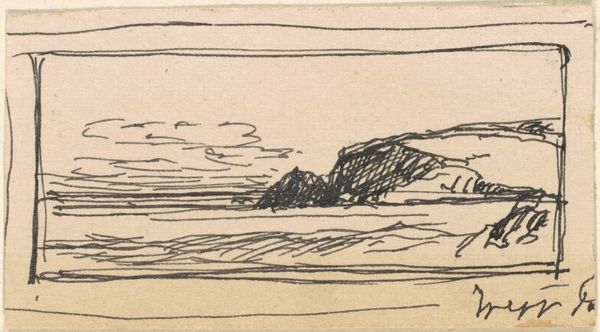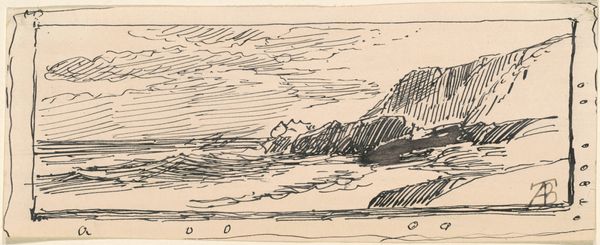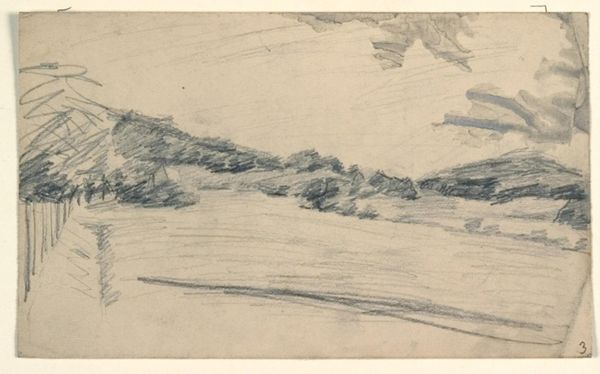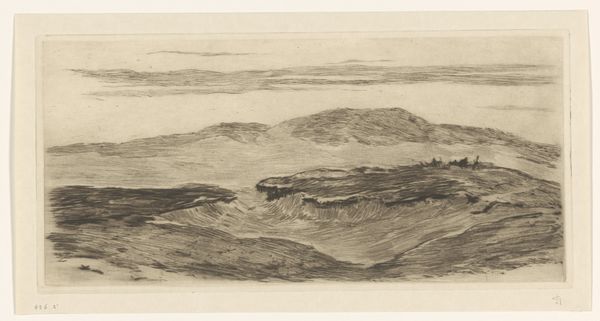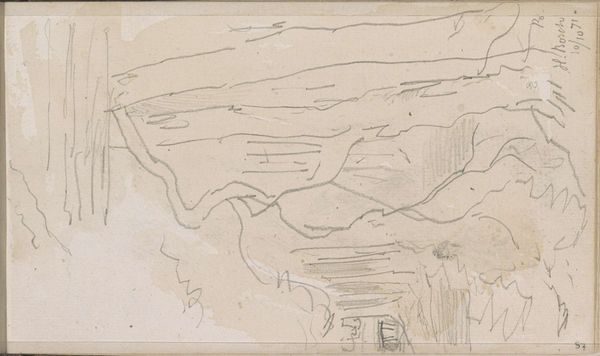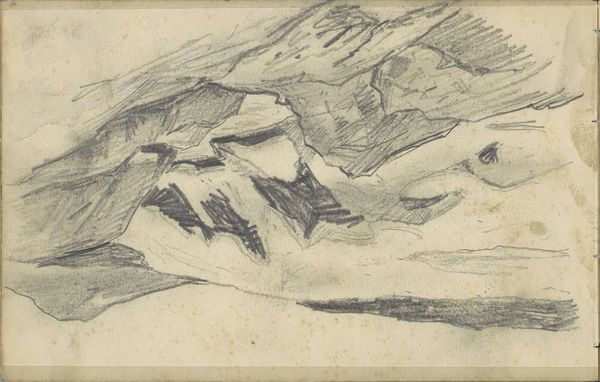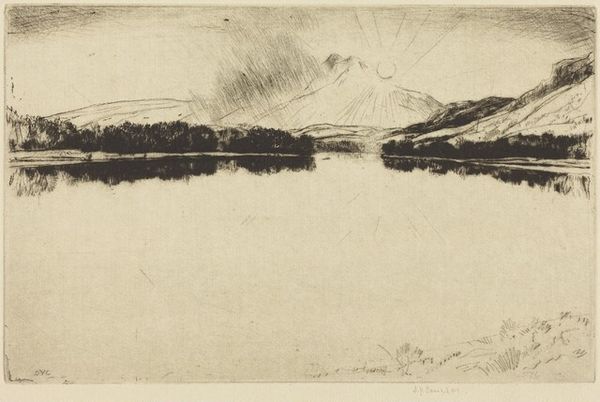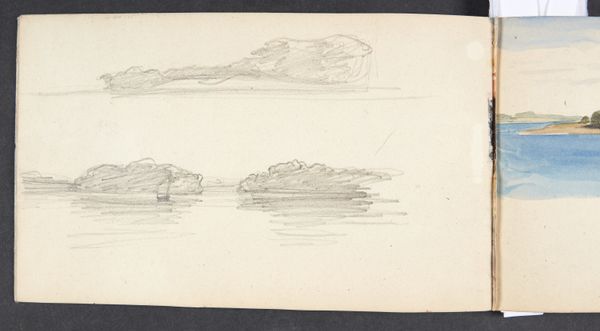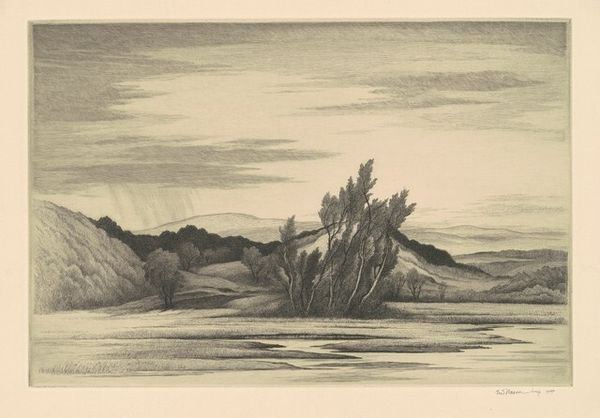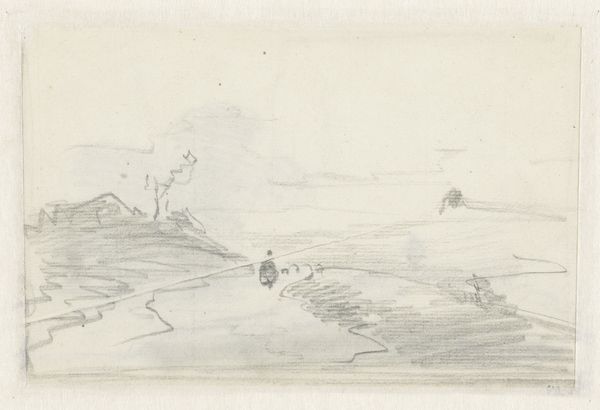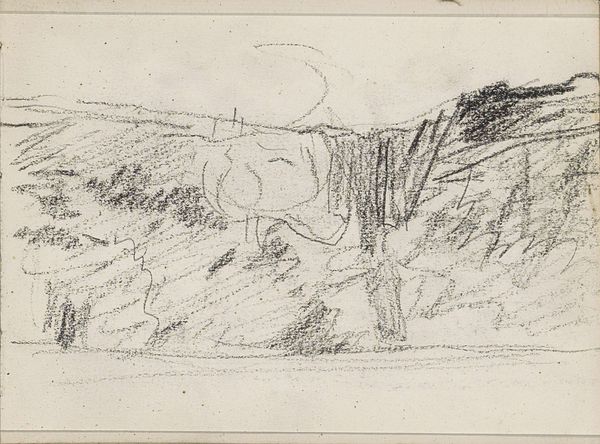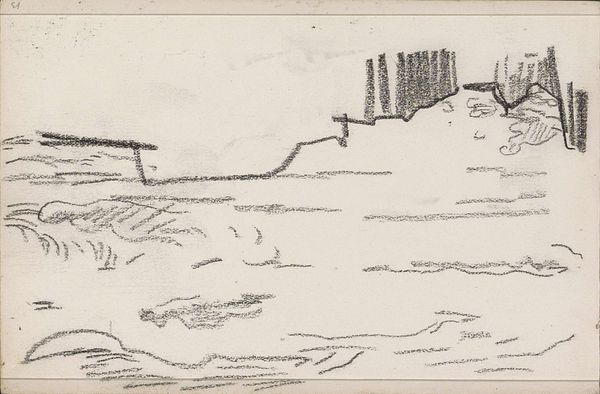
drawing, print, pencil
#
portrait
#
drawing
# print
#
pencil sketch
#
landscape
#
norwegian
#
pencil
#
symbolism
#
portrait drawing
Dimensions: image: 6.03 × 12.86 cm (2 3/8 × 5 1/16 in.) sheet: 12.54 × 17.46 cm (4 15/16 × 6 7/8 in.)
Copyright: National Gallery of Art: CC0 1.0
Editor: Edvard Munch's "Melancholy," created in 1892. It’s a pencil drawing and print, featuring a figure in the foreground looking downcast, with a landscape behind them. I am struck by the contrast; the natural beauty is being ignored by the figure absorbed in their emotions. How do you interpret this work? Curator: Well, the title alone, "Melancholy," offers a crucial point of entry. But beyond individual emotion, let's consider the broader socio-political context. Munch lived in a time of great societal upheaval, grappling with changing norms and anxieties about modernity. What impact did industrialization have on expressions of identity and emotions like melancholia? Editor: That’s interesting! So, instead of seeing it as simply a personal feeling, the melancholy might be reflecting a widespread sense of displacement during a period of rapid industrial change? Curator: Exactly! Munch often explored themes of alienation and existential angst, and his work resonated deeply with audiences experiencing similar feelings. Notice also the gendered nature of the melancholy. How does gender impact experiences of depression in modern Scandinavian society, which only recently acknowledged female enfranchisement? Does the setting of a stark seascape perhaps symbolize a sort of feminine loneliness, and the unfulfilled promises of Modernity for Women? Editor: That makes so much sense. The positioning of the figure against the rugged landscape, alongside what you have noted about feminism, adds such depth. Curator: By connecting art history to social theory, we start to see these pieces as powerful reflections on the lived experiences of individuals within specific historical moments. The drawing gives visual representation to anxieties in the artist and of an era. Editor: I never thought of art as giving an experience that historical feel before now. I'll remember this whenever I encounter artwork going forward. Curator: Likewise, I found your initial response so poignant that it prompted me to focus on the gender dynamics evident here!
Comments
No comments
Be the first to comment and join the conversation on the ultimate creative platform.

